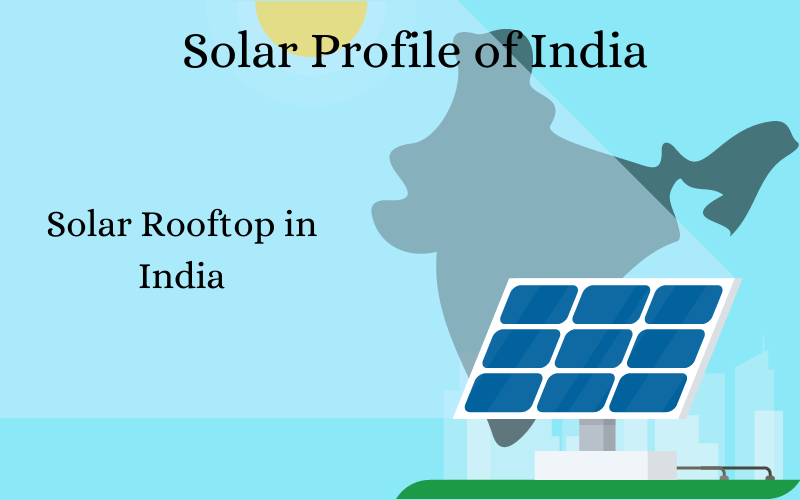On 31 March 2020, the country’s solar installed capacity reached 37.627 GW. In ten years,
India expanded its installed solar power capacity by 233 times from 161 MW to 37,627 MW
In fact, the government of India has set a huge renewable energy capacity target of 175 gigawatts (GW) by 2022. Out of which, 100 GW is the share of energy produced from solar power. And of this 100 GW, 40 GW (40%) of the target is expected to be achieved through rooftop-scale solar projects.
Currently, solar rooftop sector holds the15% of the total solar power capacity in India. Among all the states Maharashtra has the highest installed capacity of rooftop solar followed by Tamil Nadu, Karnataka, Rajasthan and Uttar Pradesh.
Recent Developments in India’s Rooftop Solar
The map here shows the status of solar rooftop capacity until September 2018 by Bridge to India. The total solar rooftop capacity until 2018 was 3399 MW. Of which, the residential solar rooftop accounted for 521 MW and the public sector accounted for 502 MW. On the other hand, industrial and commercial solar rooftop accounted for 1591 MW and 785 MW respectively.
At the end of 2019, cumulative solar installations reached almost 35.7 GW. Large-scale projects accounted for 31.3 GW, 87.6 per cent, whereas rooftop solar installations accounted for 4.4 GW which is about 12 per cent.
installations reached almost 35.7 GW. Large-scale projects accounted for 31.3 GW, 87.6 per cent, whereas rooftop solar installations accounted for 4.4 GW which is about 12 per cent.
It also stated that in 2019, large-scale projects accounted for 85 per cent of installations with 6,242 MW and rooftop solar projects made up the remaining 15 per cent adding 1,104 MW, a 33 per cent rise from the last year. The report estimated a rise in solar installations from the year by 17 per cent to about 8.5 GW by the end of 2020 and solar installations in the 65 GW to 70 GW range by 2022.
Karnataka emerged as the top state for solar energy in 2019 with 1.8 gigawatts (GW), followed by Rajasthan and Tamil Nadu. These three states accounted for almost 70 per cent of solar installations in 2019.
In the fourth quarter of 2019, rooftop solar installations were at 304 MW, an increase of 24.1 per cent compared to 245 MW in the third quarter of 2019.
Potential of India’s Rooftop Solar
The rooftop solar market holds huge growth potential across India and should be exploited to help meet the growing energy requirements of the population.
Rooftop solar PV can meet the electricity needs of consumers. Truly, there has been a tremendous increase in the number of solar adoption not only in India but also in the world. This increment can be attributed to favourable net metering policies and increased consumer awareness.
However, despite strong growth, India has to-date achieved only 10% of rooftop solar target capacity
addition of 40 GW by the year 2022. India needs to accelerate the pace of new solar
rooftop installations, while the rooftop solar photovoltaic system must be encouraged for large scale
adoption.
While India has been a frontrunner with respect to ambitious targets for rooftop solar, the probability of India achieving these targets by 2020 remains low. Majorly, because of the policy changes and the current deployment rates. Hence, there is an urgent need for innovative interventions to promote and finance rooftop solar deployment. On such initiative, the Monthly Payment Plan for solar rooftop system has been introduced by ZunRoof. With this payment method, home-owners can now get a solar rooftop system installed at their homes without even paying its entire cost. The plan comes with a minimum upfront payment and an affordable monthly payment which is as low as ₹660. This initiative will not only take away the budgetary constraints of home-owners and make the solar rooftops affordable in India homes but also add up more people to the solar industry.
Do give our blog a read for all your solar-related questions. You can also check out other interesting updates on solar on our Facebook page (facebook.com/zunroof)
Reach out to us by filling the form below:

